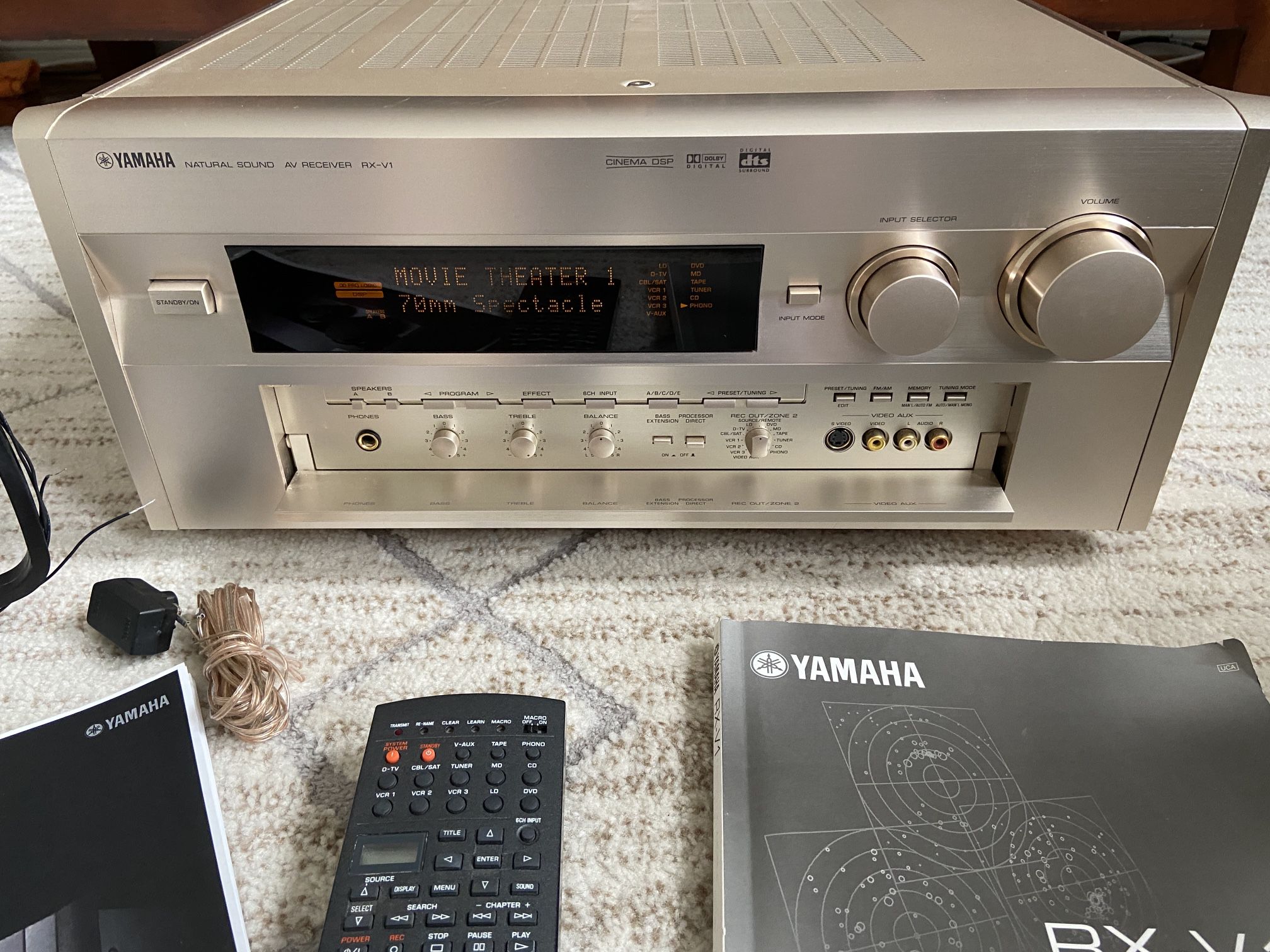Yamaha RX-V1 10 Channel AV Receiver (1999/2000) Model
$1,500
Last updated 13 days ago in Mckinney, TX
Condition: Used (normal wear)
Listed in categories: Electronics & Media - Audio & Speakers - Home audio & Stereos
Sold by

Additional images
Details
- Model
- RX-V1
- Brand
- Yamaha
Description
I purchased this Ultra high end made in Japan Yamaha RX-V1 AV receiver from the original owner. It is flawless with no damage anywhere. It was built in 1(contact info removed) and it’s a beast!! It weighs a hefty 61 lbs!! He did not have the original box, however we have the original remote, antenna and manual. I throughly tested this beast and it works like new. All channels work. Yamaha's flagship RX-V1 receiver has enough power and flexibility to float anyone's boat. Flagship is one of those words like ultimate and reference that just can't seem to get any respect these days. The next time we see last year's "ultimate" product superseded by this year's "improved" model, I think we should all complain to the manufacturer. Yamaha, however, could never be accused of hyperbole when it comes to their new flagship receiver, the RX-V1. Loaded with features, this model takes all of Yamaha's experience with DSP soundfield re-creation and condenses it into a receiver of exceptional flexibility and control. I say it's condensed, but only up to a point because, at 61 pounds, this receiver is quite a beast. Its appearance stays true to Yamaha's normal smooth and clean style, with most of the controls hidden behind a flip-down door. The rear panel is about as populated with connectors as any product I've ever seen— with seven A/V inputs, including three VCR loops (there's also an A/V input on the front). To handle component video sources, there's a three-input switcher with one output. Additionally, there are three audio-only inputs with two tape loops, a phono input, and a 5.1-channel input. On the digital side of things, there are seven optical and three coaxial inputs, an AC-3 RF input, and an optical record output. Other outputs include a full complement of preamp outputs, including stereo and mono subwoofer connections, no less than 10 speaker outputs, two monitor outputs, and a second-zone A/V output. All A/V connections except the second-zone output include both S-video and composite connections. Control is important with a product as versatile as this, so Yamaha has included separate IR inputs for each zone, a repeater output, an RS-232 interface, and a 5-volt trigger output. Now, some of you may be scratching your head at the thought of 10 speaker outputs. There are two sets of outputs for the main left and right speakers, but that still leaves you with eight individual channels of amplification. Sure, there are the usual five channels that we're all familiar with, but Yamaha has added a pair of front surround speakers and a rear center speaker, which poses an interesting problem. Many people find it difficult to position five speakers plus a subwoofer, and now we're asking them to add another pair of speakers above and outside the main left and right, as well as a speaker behind the listening position called the surround back. This surround back speaker could be particularly difficult because many people have their sofa up against the wall. In my room, there's a pair of French doors behind the sofa, and the surround back speaker wound up blocking part of the doorway, which is fine for the review period but not much longer. Those of you who have been doing your homework will realize that having one surround back speaker is at odds with the current recommendation for meeting Surround EX and DTS ES standards, which suggests two rear speakers. Yamaha, in their individualistic way, has decided that using one rear center is better, and they also want you to use direct-radiating left and right surround speakers positioned somewhat behind the listening position to get the best compatibility with their DSP surround algorithms. Setup is fairly straightforward once you've run all those speaker cables, with onscreen displays that guide you through most of the process. Curiously, while there's an easy provision to set a delay for the center and surround back speakers relative to the main front and left/right surround speakers, the front-to-rear delay must be set individually for each surround mode. Bass management is quite comprehensive and will, among other things, let you send the main left and right channels' bass information to both the sub and the main speakers simultaneously. There's even a variable low-frequency tone generator to assist in woofer positioning.
Save, Report, and Share
Item location map
Map is approximate to keep seller’s location private.
Related searches
- Bose
- Subwoofers
- Amplifiers
- Dj equipment
- Stereo system
- Klipsch
- Bose speakers
- Beats studio
- Audio speakers
- Marantz
- Stereo receiver
- Earbuds
- Polk audio
- Pro audio
- Sony headphones
- Pioneer receiver
- Onkyo